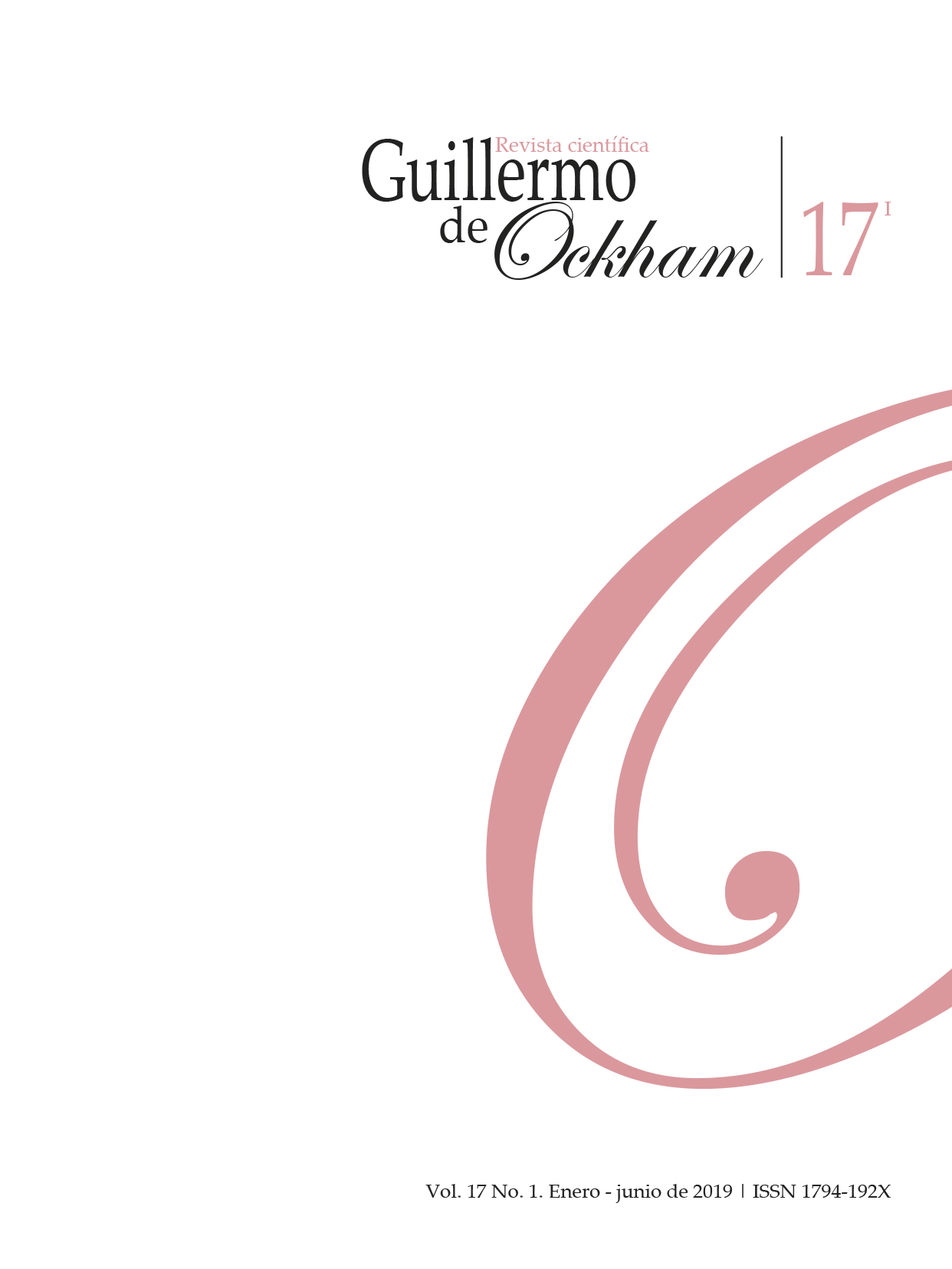La Revista Guillermo de Ockham brinda un acceso inmediato y abierto a su contenido, basado en el principio de ofrecer al público un acceso gratuito a las investigaciones para brindar un intercambio global de conocimiento. A menos que se establezca lo contrario, el contenido de esta revista tiene una licencia con Creative Commons Attribution-NonCommercial-NoDerivatives 4.0 International (CC BY-NC-ND 4.0) http://creativecommons.org/licenses/by-nc-nd/4.0/
- Atribución: debe otorgar el crédito correspondiente, proporcionar un enlace a la licencia e indicar si se realizaron cambios. Puede hacerlo de cualquier manera razonable, pero no de ninguna manera que sugiera que el licenciante lo respalda a usted o su uso.
- No comercial: no puede utilizar el material con fines comerciales.
- Sin derivados: si remezcla, transforma o construye sobre el material, no puede distribuir el material modificado.
- Sin restricciones adicionales: no puede aplicar términos legales o medidas tecnológicas que restrinjan legalmente a otros de hacer cualquier cosa que permita la licencia.
Resumen
‘The mystery of the Most Holy Trinity is the central mystery of Christian faith and life ... the source of all the other mysteries of faith, the light that enlightens them.’ This passage from the teaching of the Catechism of the Catholic Church (CCC) (234) on the profession of faith identifies the core principles and underlying recognition of Catholics regarding belief in a triune God – one God existent in three Persons: Father, Son and Holy Spirit. In addressing the people of Ephesus, St. Ignatius of Antioch (also known as Theophorus) said, faithful Christians were ‘being stones of the temple of the Father, prepared for the building of God the Father, and drawn up on high by the instrument of Jesus Christ, which is the cross, making use of the Holy Spirit as a rope, while your faith was the means by which you ascended, and your love the way which led up to God.’ (Ignatius of Antioch, 2014, loc. 4027.) St. Ignatius goes on to say, ‘the Holy Spirit does not speak His own things, but those of Christ, and that not from himself, but from the Lord’. The point St. Ignatius was making is that the three Persons of the triune God are integrally connected, and it is through the grace of the three-in-One that salvation is gained. Hence, the Trinity is the core of the Christian faith, but from the very beginning the faithful relied on metaphor to explain and help others understand how Three could be One
































